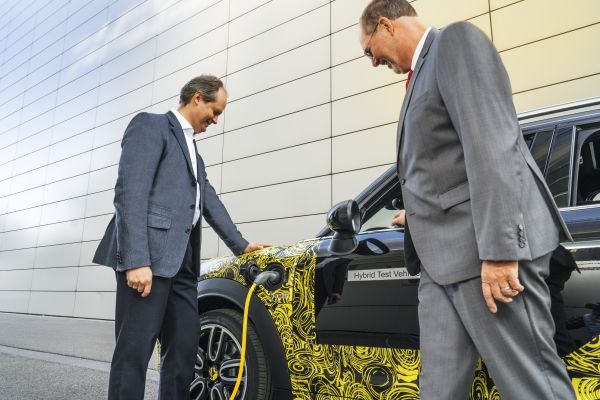
Knowing the company has a great base on which to start, Mini builds on its superb and classic heritage while adapting only as necessary, and with the goal of improving and not compromising. For example, the prominent and iconic RPM counter on the dashboard has been replaced with a distinctive power display. There is also an internal combustion engine to remove range anxiety while providing enough battery energy storage for most around-town trips. The vehicle always starts in all-electric mode; when or whether the gasoline engine kicks in depends on the vehicle’s speed and the intensity – the more aggressively or the longer the vehicle is driven, the more the gasoline engine will be called upon.
But the battery in the Mini is not merely window dressing to satisfy increasingly stringent fuel economy standards, nor does the battery power detract from the pleasure of driving. “As far as the chassis and suspension are concerned, nothing changes from the conventionally driven model variants” says Peter Wolf, head of Mini’s series management, “and the set-up benefits a lot from the hybrid concept.”
One of the benefits to which Wolf refers is that the electric motor transmits its power to the rear wheels, while the combustion engine powers the front wheels. Leveraging these distinct power sources enables the vehicle’s Dynamic Stability Control (DSC) system to optimize traction and drive stability. “As soon as there is any risk of drive slip, the second drive unit is activated to provide additional traction when starting off or ensuring a high level of steering precision when cornering,” explains Wolf.
Another benefit of the electric drive system is that its components can be flexibly positioned so that they are balanced between the front and rear axle – ideal for achieving excellent agility. “In a hybrid Mini model, driving electrically must also be an exhilarating experience,” said Sebastian Mackensen, Mini’s head of brand management. “With this model we want to convince Mini customers of the benefits of hybrid drive,” says Mackensen, “and impress everyone who already has hybrid driving experience with Mini’s unique go-kart driving feel.”
When the vehicle is in “AUTO eDRIVE” mode, power comes solely from the electric motor up to speeds of 50 miles per hour; at higher speeds in this mode, the vehicle’s energy management system begins to blend the combustion engine. This means that the vehicle emits absolutely no tailpipe emissions during around-town driving, or even up to moderate highway speeds. For drivers wishing to not use gasoline at all, the “MAX eDRIVE” mode delivers all-electric power up to 80 miles per hour.
A third mode is “SAVE BATTERY,” which reserves battery power for when doing so is most efficient. This option is intended for a trip that begins with highway speeds, for which gasoline is better than electricity, and ends with driving on slower secondary roads where electric power enjoys great efficiency. So despite a battery that is small compared to fully-electric vehicles such as the Tesla, the “SAVE BATTERY” mode allows you to drive hundreds of miles and still pull into a neighborhood at the end of the journey while cruising in silence and with no tailpipe emissions.
I invite you to view my other posts and sign up to receive future posts via email. I also invite you to follow me on LinkedIn and Twitter, and to contact me via my homepage.

